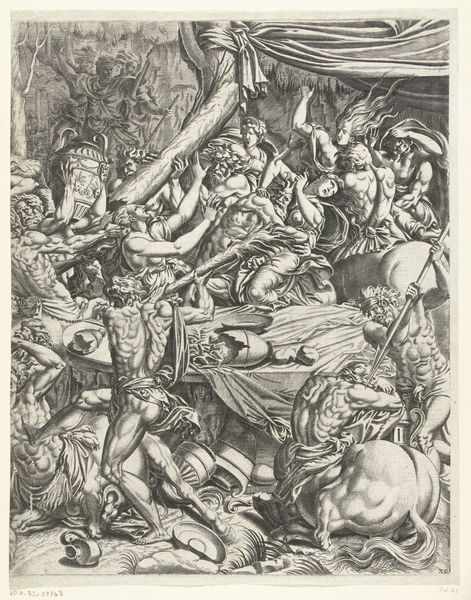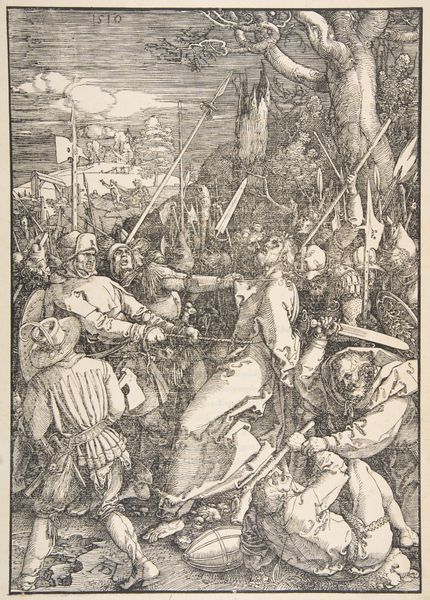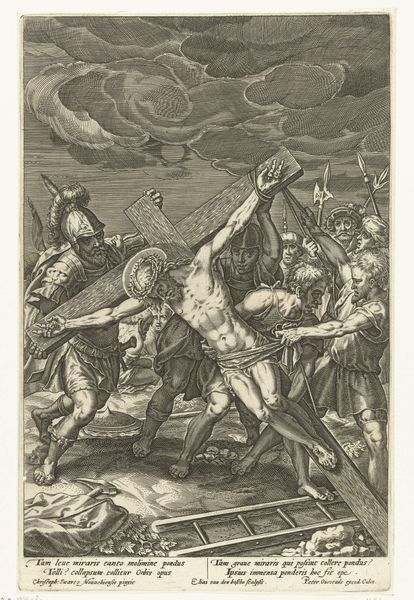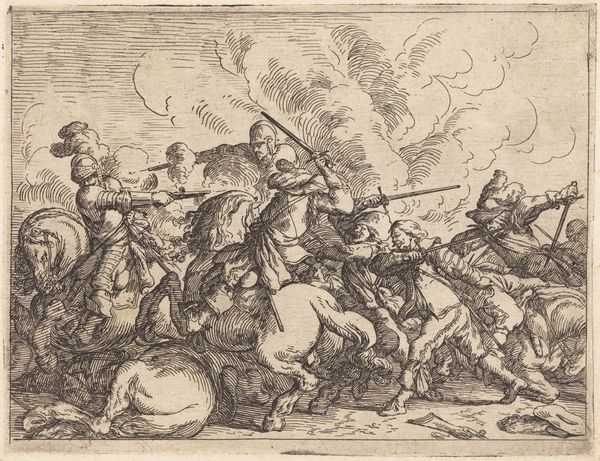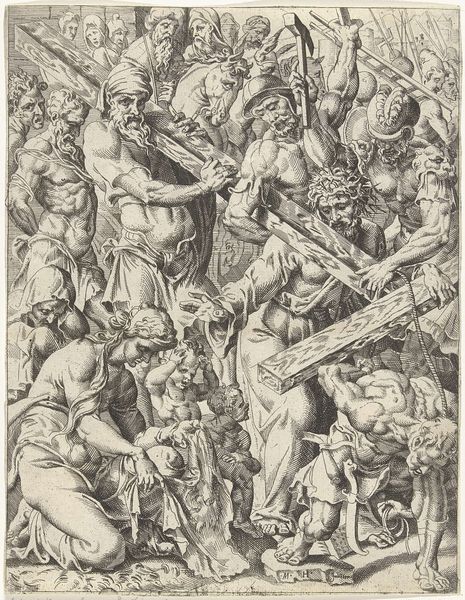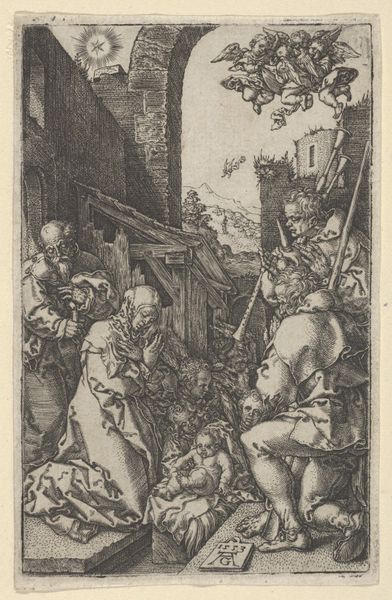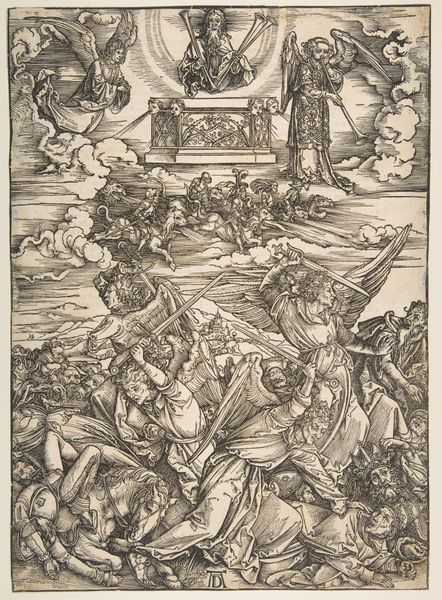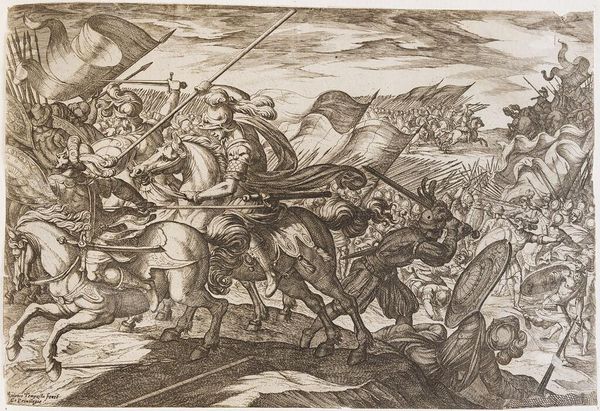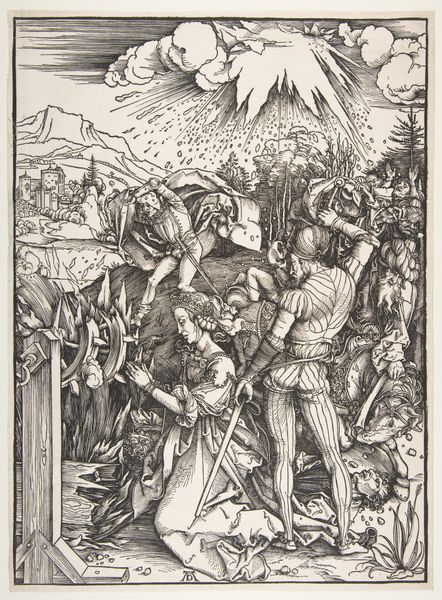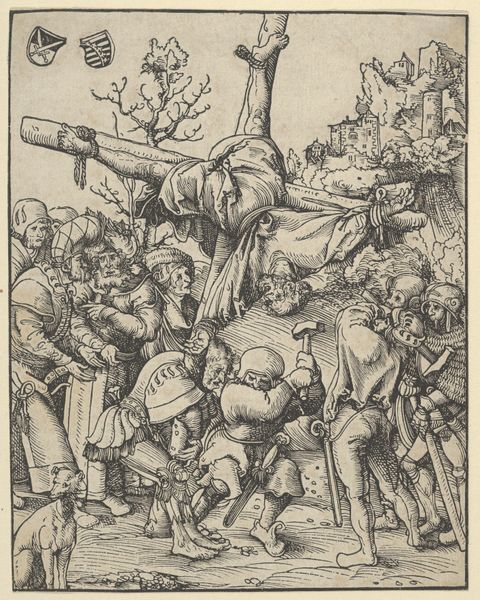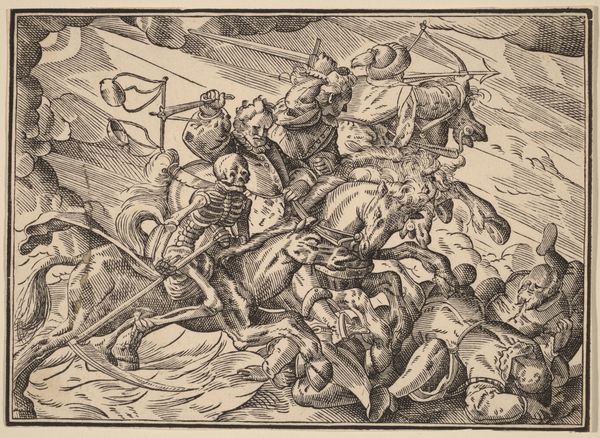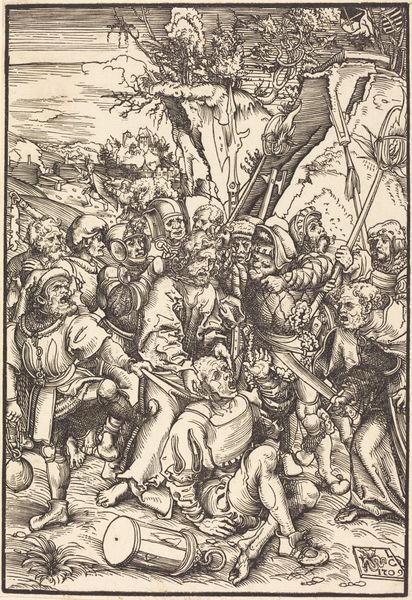
drawing, print, ink, engraving
#
drawing
#
ink drawing
#
pen drawing
# print
#
pen illustration
#
pen sketch
#
landscape
#
mannerism
#
figuration
#
ink line art
#
ink
#
line
#
history-painting
#
engraving
Dimensions: width 195 mm, height 236 mm
Copyright: Rijks Museum: Open Domain
Editor: Here we have "Flight of the Assyrian Army," an ink engraving by Dirck Volckertsz Coornhert, dating back to the mid-16th century. The chaotic scene and the stark lines really give it a frenetic energy. What do you see in this piece? Curator: Beyond the immediate depiction of battle, I’m drawn to consider Coornhert's labor in creating this image, the repetitive act of engraving the lines that give it form. The choice of printmaking – a medium that allowed for mass production – is telling. How does the reproductive nature of print influence its reception, its place within the broader socio-economic landscape of 16th-century Europe? Editor: That's interesting, I hadn't thought about the printmaking aspect specifically. So, its value isn't just in the artistry, but also in its accessibility at the time? Curator: Precisely! Consider also the cost of materials: ink, paper, the metal plate itself. These determined who had access to image-making and image consumption. How might that influence the way people understood history? Was this engraving commissioned or created independently? The answers to these questions can unveil how Coornhert engaged with and perhaps even challenged, the power structures of his era through his choice of subject matter and medium. Editor: I see what you mean. It's not just a historical scene, it’s about the means of production and the society surrounding its creation. It adds another layer to the story. Curator: Exactly. We shift focus from the represented elite towards the laborers who produced the means of representation, understanding art as a product of social relations, not just individual genius. Editor: I'll definitely look at art through a different lens now. Thanks for highlighting the production process. Curator: My pleasure. Paying attention to the materiality can transform our interpretation.
Comments
No comments
Be the first to comment and join the conversation on the ultimate creative platform.
